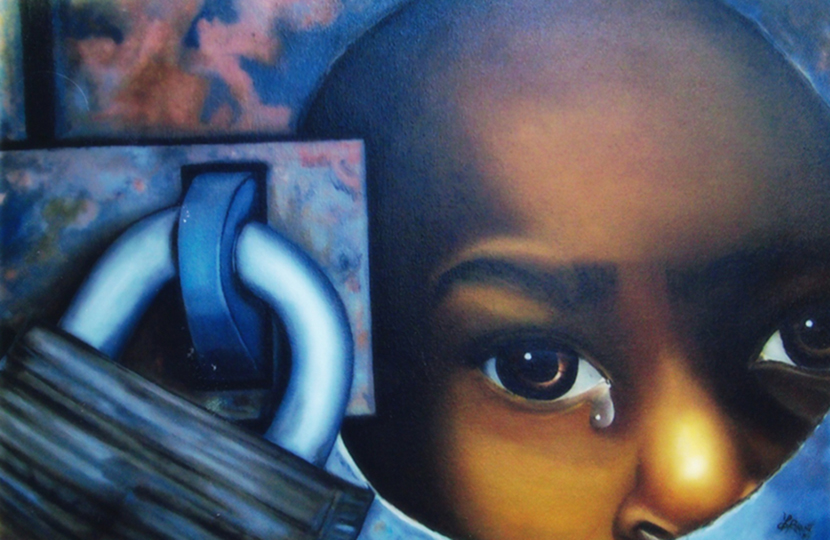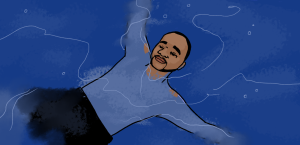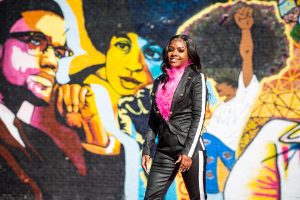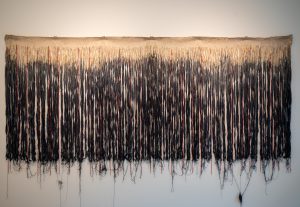Libyans sometimes refer to being arrested and taken away without warning as being “taken behind the sun.” This interview series celebrates—through conversations with formerly-incarcerated artists and their allies—the ways in which an artistic, creative life can transmute the impact and redefine the legacy of an experience within the Prison Industrial Complex.
For this installment, I’ve expanded the scope of the series and reached out to an artist still fighting to free himself from the Illinois Department of Corrections. Larry J. Brent, Jr. has served over twenty years in prison for a crime he didn’t commit, indicted by false information elicited via torture at the hands of the Chicago PD.
While working to prove his innocence, Larry has made his time count: working as an artist and poet, teaching classes on subjects ranging from math to public speaking, and educating himself through programs like the University of Illinois at Urbana-Champaign’s Education Justice Project. I interviewed him by mail to learn more about his growth as an artist, his family ties, and his feelings on impending freedom.
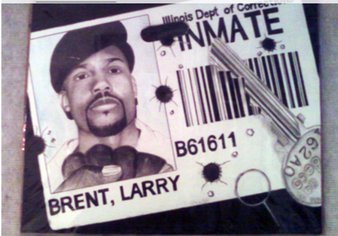
Michael Fischer: You were interested in art before getting locked up, but your entire body of work has been completed in prison. Talk about the shift in perspective you had towards art when it went from being something you had an interest in on the outside to being a lifeline on the inside?
Larry J. Brent, Jr: First, let me say that art/creativity was never a passing interest. It was a natural attraction and desire; it always felt like something I should be doing. My initial exposure to creativity (not just art) was my father. Watching him operate within his creative zone had a major effect on me. It’s similar to the idea that one person can have a drink of alcohol and think nothing of it, but another person can become an alcoholic after one drink. The desire was always there, and the exposure to alcohol brought it out.
That’s how it was for me, but due to life’s distractions, it never had a chance to be cultivated. I actually have a nice amount of work done prison to prison, only we have no idea where it is. Prison to prison, I allowed tragedy and entertainment to mislead me. Even so, I was drawing and being creative: building model aircrafts and automobiles, a hobby I picked up from my dad as well.
Once trapped here, I was stressed, frustrated, angry. I was confused about how my life got so out of control. I immediately began to self-analyze to figure myself out, and that began my journey of development. So from the start, I didn’t look to use art as a lifeline. It was just something to do to deal with the time. There’s only so much TV you can watch. You can only play cards and board games for so long, can only do so many push-ups before realizing, “I need to do more. This isn’t enough.” So I asked my dad to bring me drawing supplies in the Cook County Jail, back in 1994. The journey began there and it never stopped. There was so much chaos around me—major chaos, being in the maximum security division—but my focus had flipped.
You see, prison to prison I allowed certain things to distract me. But in isolation, most of life’s distracting entertainment is stripped away. You’re forced to free the rawness inside you. The rawness of me was my creativity, which I began to use to co-exist with disappointments and tragedies, with the chaos around me. It was not so much trying to keep my spirit alive—I wasn’t thinking that far, couldn’t. It was mostly my instinct and training switching into gear: training from the military to stay mentally occupied within isolated circumstances.

MF: Your dad is an artist, as is your sister. How has having art as a common bond and calling in your family helped you bridge the physical gap incarceration has created between you?
LB: In the beginning, the physical gap felt enormous. You can only write so many letters, or make so many phone calls (which were expensive). There has to be more—a more fulfilling, consistent, and less expensive means of enduring. The homesickness was sickening, even though I’d gotten used to being away from home when I was in Basic Training for the Army Reserves. The prison experience of being away was different.
At the time I entered the system, my father was struggling with the death of his eldest and only brother, and my sister Elizabeth was still a toddler. But the knowledge of my dad being an artist did give me a solid sense of discipline with my ability: the confidence, the determination to get better and to keep going, no matter what was happening around me in here. Unlike when I was physically free, now I refuse to allow my surroundings to impound me, mentally or emotionally. This is/was my struggle, my fight in prison—with myself.
So over the years as we all matured and endured—Dad, Elizabeth, and myself—the physical gap was less debilitating. We began to grow closer by filling that gap with long-lasting creative exchanges. When I first entered the system it was extremely physically dangerous, with my start in Division One of Cook County jail in ‘94, then moving on to maximum security prisons: Pontiac Correctional Center and Menard Correctional Center.
Along with being physically dangerous, prison is and probably always will be mentally and emotionally dangerous. It isolates from real life events, but the bigger issue is that mental and emotional health/development tends to be overlooked, with more attention paid to the physical danger and physical separation from real life.
Even still, the more I endured, the more I poured into my creativity. I just wanted to keep growing. The prison atmosphere is so stagnant; life is at such a standstill. I just refused to be held in neutral. So I plunged into creativity and education.
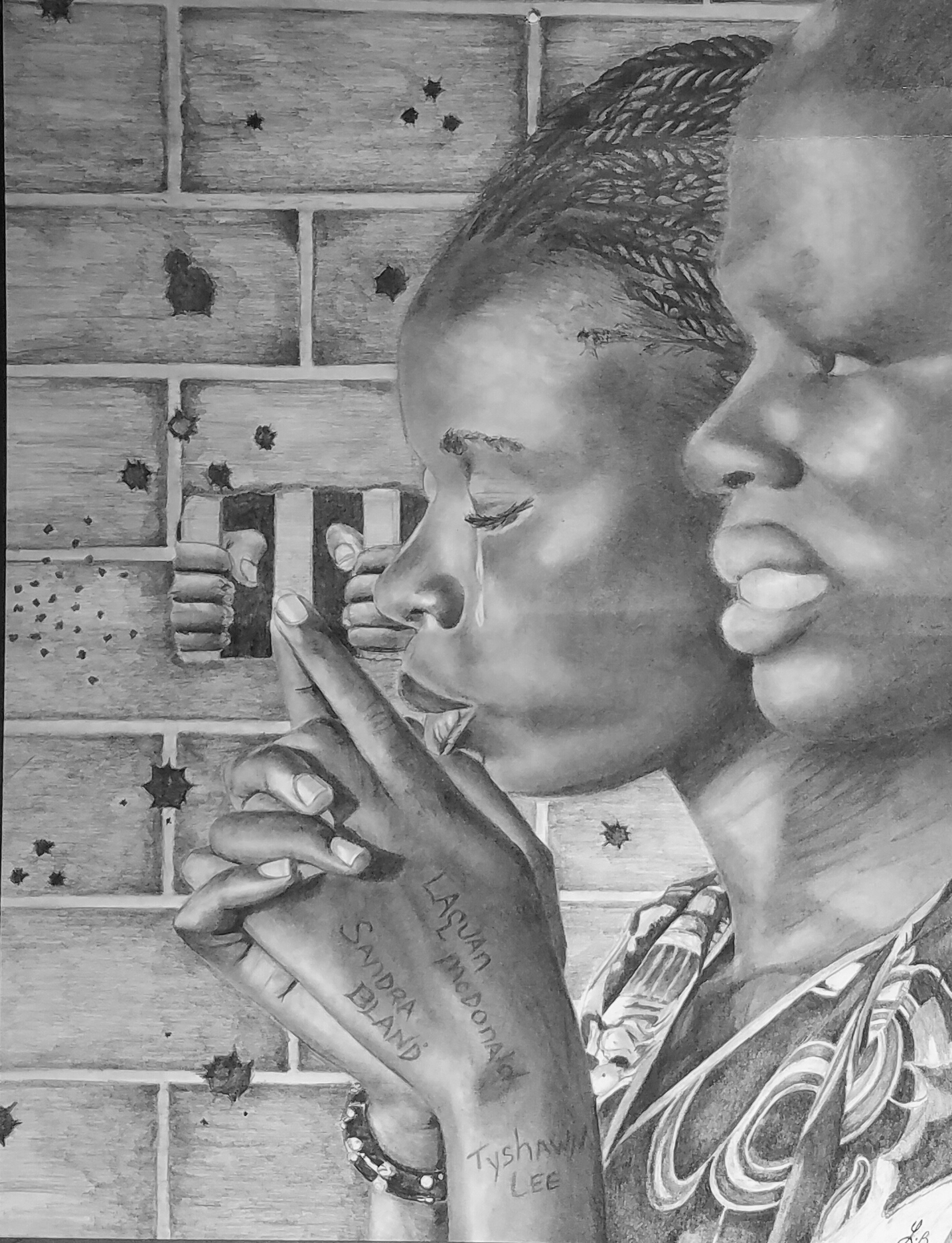
MF: One of the things your father says is, “My art has to do something.” I assume you share that same philosophy. What, in your mind, does your art have to do—for you but also for others?
LB: Yes, my father has always said, “My art has to do something,” but I don’t create that way. My perspective developed into, “my art has to say something,” and make others “say something.” This was not my initial intention. I would see some images here and there and get a vision. My next thought was to see if the images could be combined together, or simply changed—pretty much a challenge to myself. Then I began to realize through people’s reactions to my work that the projects contained a message.
It was all pretty funny to me the way it came about, considering my thinking was just, “I wonder how this would look if I put them together?” From there, the random interpretations or questions of its intended meaning began. I believe this realization dawned on me soon after the completion of an early painting of mine titled, “Captured Potential.” Actually, it’s the piece I donated to Ms. Rebecca for representation of the Education Justice Project.
MF: You’ve been teaching classes in a number of subjects, including art. My first teaching experience was a class taught to other inmates as well; it’s still on my resume, even out here. How has being a teacher changed your approach to and perspective on your own work, or on art in general? What has teaching changed in you?
LB: There was a time when I couldn’t teach art or drawing; I never took an art instruction class, except in high school. I had to be taken out of that class because I wouldn’t listen to my teacher—Ms. Burgette was her name, I believe. I figured I already knew how to draw. I regret not listening to her. Some time ago, it dawned on me that she was trying to teach me different ways to draw. I hope to see her again some day, to apologize.
But overall, I’m self-taught; I had been incarcerated about eleven years before reading a drawing book. That’s when I learned the formal terminology for things like mid-tones, highlights, shadows, etc. This is also when art really began to make sense to me, in that it was not just a hobby or talent, but a craft—something to be studied. I’ve read a lot of drawing books, some better than others, but the two best sources of insight for me are: (1) dialogue with my father, and (2) a book entitled Drawing on the Right Side of the Brain (revised edition) with its section describing negative space.
Not long after studying the books, teaching opportunities fell into my hands. The main thing, the most incredible thing that teaching has taught me, is that creativity is super versatile and limitless, and because we are all unique individuals, so is our individual form of creativity. The fact that we can all see the same things differently is creative in itself. So to be an art teacher, or a teacher in general, one has to teach creatively.
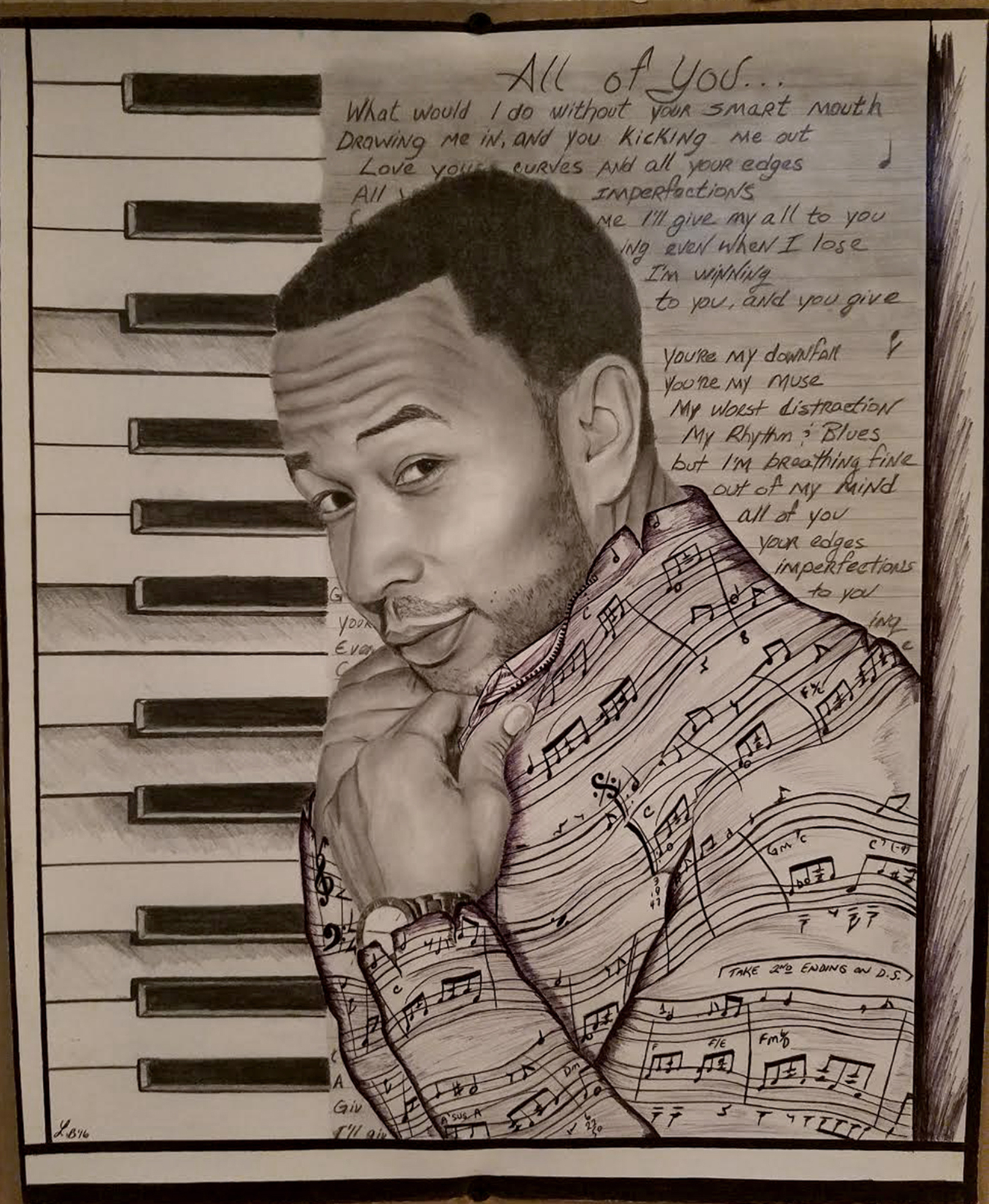
MF: The examples of your work that I’ve seen are all portraits, and each piece has a striking sense of intimacy and emotional power that many artists can’t capture. Bad as they are, are any aspects of the prison environment—the isolation and loneliness, both physical and emotional—helping you press deeper into the intimacy of your work?
LB: This is probably my favorite question. Yes, much of my work (that you’ve seen) are portraits. This started in the 7th grade, wanting to draw portraits exact and detailed; my first portrait attempt was William Shakespeare. Portraits are the basis of my artistic development, and now I can draw any subject/object in various mediums.
The figures I’ve drawn didn’t motivate me so much through my struggles, but there was something about them in their situation/circumstances. The way they handled themselves commanded my respect and admiration to want to capture their essence—as I saw and felt it—within my medium of choice (mostly graphite).
So, there are no specific aspects of prison that help me to push deeper and be detailed; being detailed was always my desire. In prison, I use my gift to escape all the circumstances for as long as I can, a process I’ve deemed “Travelin’.” My gift was, in the beginning, something I would use to avoid stagnant living. It eventually became a major part of my character, something that would allow me to live steadily and become free.
My dad and I share a perspective: “I can draw anything I can see.” But there’s a difference between us. For my father, he has always created what he saw in his mind. I’ve been able to capture the essence of objects in my physical sights, but tend to alter in my mind. So for me, it goes from the physical-visual to mental perception, on to stationery—the process of Travelin’.
Instead of allowing my surroundings to surround me, as in my past, I use my circumstances now to inspire my focus—to push away and travel within myself. My father has always seemed to have a better, stronger ability to travel within his own head and bring things out.
MF: You’ve written that prison improved the level of detail in your work, that being in the prison vacuum allows you to focus on every single stroke. That being said: with so much time on your hands, how do you keep yourself from fiddling with a given piece for too long? How do you know when the next single hair will be one hair too many?
LB: I didn’t mean that prison directly improved the level of detail in my work, because to be detailed was always my vision, prison to prison. But in this sense, as I matured in dealing with life circumstance, I began to step deeper into my abilities—to be productive and not be destroyed. Because of the uniqueness (I’ve learned) of my creativity, this is just my way. The harder the circumstances, the harder I strive to grow through them.
At one point, I allowed the pressures to encourage self-destruction. But that has been adjusted: disappointment, anger, heartache, rejection and loneliness are no longer crushing to me. In fact, anger has been my best source of fuel and motivation.
But I have had many instances of working on something too long, mostly because I’m a perfectionist. Speaking with my father on the issue, he simply advises, “There’s just a point at which you must cut it loose to let it be. No project is ever truly finished, complete, or perfect, so you as the creator must decide when to be done.” This discipline took time to develop, and it has rather sharply, but there will always be fine detail in my work because it’s just my way.
Make no mistake: there are plenty of annoying distractions around me in here. It’s very difficult to be a devoted artist in prison, especially where I am now, having to work around so many others’ schedules with no absolute work space to work in, and always having to set up to work and then break things down when done.
 Wild Ride, Larry Brent, Jr. Image courtesy of the artist.
Wild Ride, Larry Brent, Jr. Image courtesy of the artist.
MF: There’s a part of me that still thinks I’m the age I was when I went to prison. Obviously I know that’s not the case, but sometimes I do have to consciously remind myself how much time has passed. It’s like an arrested development thing. You’ve been locked up since you were a teenager, but you’ve grown and matured a great deal over the decades. At the end of the day, how old are you in your mind? How old do you feel?
LB: This is an interesting dynamic. At the end of the day I am soon to be 44, but there are times when I have to remember my actual age, or kind of convince myself that I’m not in my twenties. I was 20 years old when I was arrested, and often times I still feel the zeal of that youth in me. But the interesting thing is, there have been friends I’ve known who’ve gone home after a stretch of time, and they’ve stated how mentally and emotionally they went back to how they felt the last time home, as far as the fervor of curiosity and tendency to want to explore/experiment in many ways.
But I can agree with the arrested development analogy to a decent extent. Unfortunately though, as I’ve noticed, most arrested development cases are intellectual as well as emotional—especially for those who entered prison uneducated. These individuals tend to exit prison worse than they entered, but I do know quite a few who are exceptions to this.
Me, I didn’t enter prison uneducated, just unaware. Unaware of social issues in terms of race/politics, and unaware of my own abilities. What has helped me to continue developing—especially intellectually—was my solid foundation of basic education, military training in dealing with living in isolated environments, the study of historical revolutionaries, and most importantly, the unconditional support of my family.
I entered this situation with a lot more tools and resources to help me endure than most people. But while I’ve maintained and developed intellectually, physically, and emotionally, I can say my development had been arrested for a long while. It’s something I’ve been struggling to improve for the past few years. I am a work in progress.
MF: Your release date is set for 2019. In addition to teaching and working on your art, you’ve taken a number of college courses inside, utilizing programs like the Education Justice Project. How do you hope to put all of that together once you’re free? What are you hoping your life on the outside will look like?
LB: I love this question. Yes, I am nearly done here and I’ll tell you this: I’m not overly concerned about anything. I entered prison with a lot of tools to deal with anything, in here or out there. I was just unaware of who I was. Now that I know? Basically, there’s a laundry list of programs, activities, vocational programs and academic classes taken over the years, including Education Justice Project. To me, this entire experience was an extensive basic training course, equipping me to deal with however life guides me.
Currently speaking, I’m a 24-hour institutional plumber, President of a Toastmasters International Gavel Club, a longstanding member of the Elevated Minds Movement Poetry Club, and a certified Peer Educator (certified by the Health Department to give presentations on HIV/AIDS, STIs, and Hepatitis). In a nutshell, I’m more than ready for whatever, and my life on the outside will look whatever way I decide it will. Because I know who I am, and what Larry Brent is supposed to be doing.
Thank you for these questions.
Do you enjoy what we do at Sixty? Please help keep us going by making a contribution today.
Featured Image: Captured Potential, Larry Brent, Jr. Image courtesy of the artists.
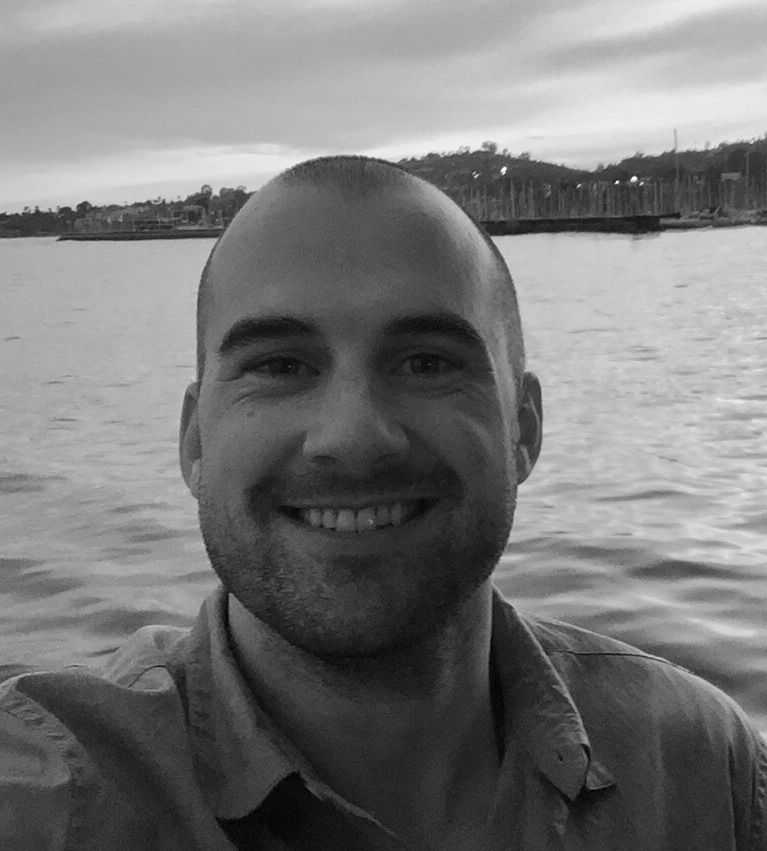 Michael Fischer was released from prison in 2015. He’s a Moth Chicago StorySlam winner, a Luminarts Cultural Foundation Fellow, and a mentor for incarcerated authors through the Pen City Writers program. His work appears in Salon, The Sun, Orion, Guernica, The Rumpus, and elsewhere, and his audio essays have been broadcast on CBC Radio’s Love Me and The New York Times’s Modern Love: The Podcast.
Michael Fischer was released from prison in 2015. He’s a Moth Chicago StorySlam winner, a Luminarts Cultural Foundation Fellow, and a mentor for incarcerated authors through the Pen City Writers program. His work appears in Salon, The Sun, Orion, Guernica, The Rumpus, and elsewhere, and his audio essays have been broadcast on CBC Radio’s Love Me and The New York Times’s Modern Love: The Podcast.
